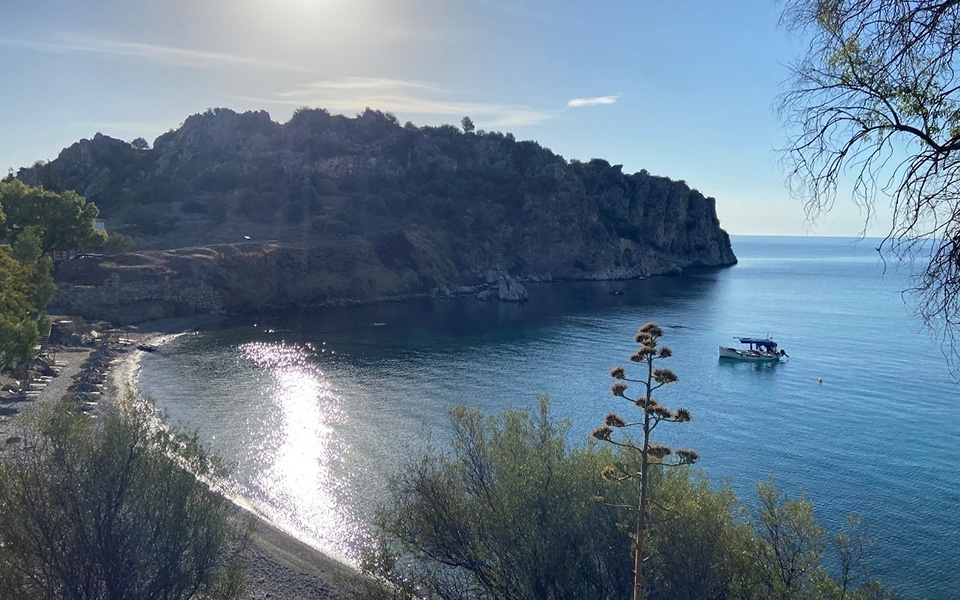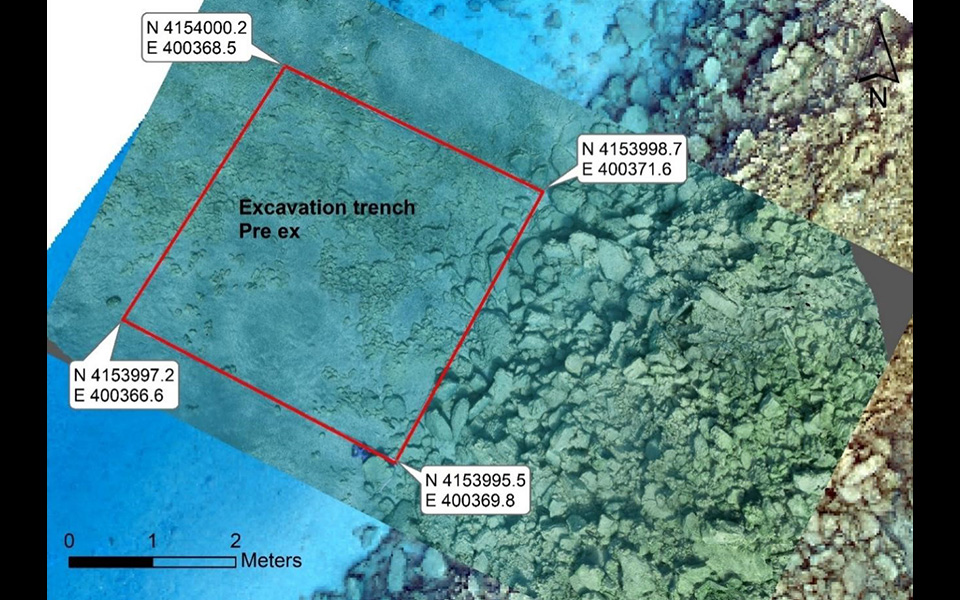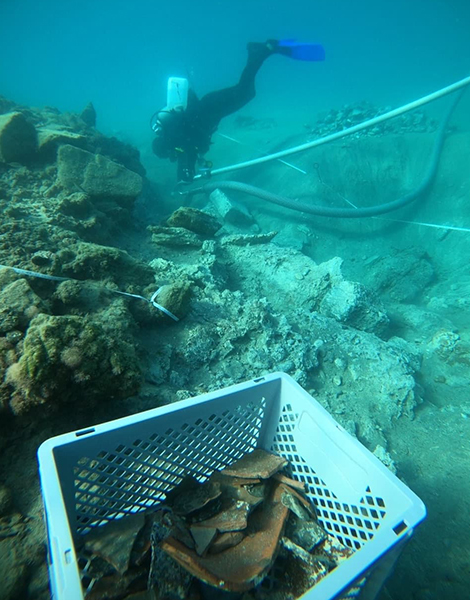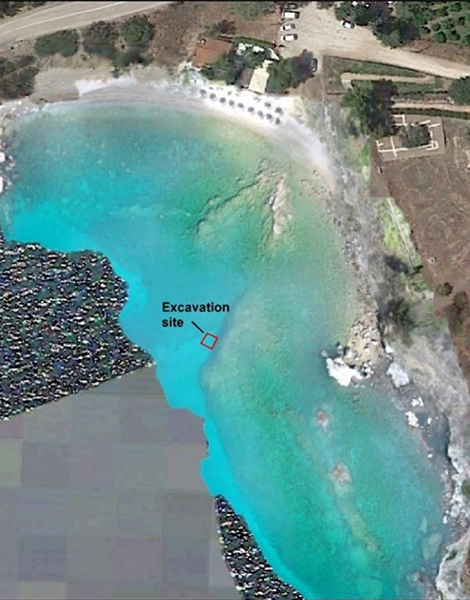Archaeologists uncover submerged structures in the Argolic Gulf near Asini, an ancient city featured in Homer’s “Iliad” within the famed Catalogue of Ships.
In the shallow coastal waters of the Argolic Gulf, archaeologists have uncovered the remains of an ancient harbor near Asini, shedding new light on maritime activity in the region. Situated just east of the modern coastal village of Tolo (Tolon) in the Argolid, northeast Peloponnese, the site is part of an ongoing research project exploring the long history of coastal settlement in the area.
The acropolis of Asini – known in antiquity as “Asine” – rises above the natural harbor, a vantage point that has witnessed millennia of seafaring history. The city’s significance extends beyond archaeology; it was important enough to be included in Homer’s “Iliad,” where it appears in the Catalogue of Ships in Book II as one of the cities that contributed warriors to the Trojan War. This connection to myth and history makes the recent discoveries particularly compelling.
From October 7 to 11, 2024, an international team of underwater archaeologists conducted the latest phase of excavations at the site. The project, a collaboration between Greece’s Ephorate of Underwater Antiquities, the Swedish Institute at Athens, and Stockholm University, also received support from the University of Gothenburg and the Nordic Maritime Group.

Mentioned in Homer, the acropolis of ancient Asini ("Asine") overlooks the natural harbor. The anchored boat indicates the location of the submerged structures.
© Ministry of Culture / Ephorate of Underwater Antiquities
Investigating a Submerged Harbor
Previous surveys in 2021 and 2022 identified a large artificial platform in shallow waters, suggesting the remains of an extensive port facility. Some sections of the platform feature architectural elements that may have served as rooms or storage areas, indicating that it was more than just a simple docking point.
Under the leadership of Dr. Panagiota Galiatsatou of the Ephorate of Underwater Antiquities, along with Swedish specialists Prof. Ann-Louise Schallin and Dr. Niklas Eriksson, the team focused on a partially preserved stone-built structure on the seabed, believed to be part of the ancient harbor complex. This structure, situated on the northwestern edge of the platform, became the focal point of the most recent excavation.
During the fieldwork, archaeologists opened a 16-square-meter trench for detailed study. Using high-resolution photogrammetry, they created a precise 3D model of the site, allowing for further analysis. Among the most notable discoveries were large stone blocks and fragments of worked masonry, suggesting that the harbor installation was solidly built and possibly fortified. Amphora sherds embedded within the stone structures, along with a fragmented ceramic vessel uncovered in an area designated as “Sector 4A,” may help establish a clearer timeline for the harbor’s construction and its role in regional trade networks.
The relatively well-preserved condition of the submerged structures suggests the harbor remained in use for an extended period. However, signs of structural collapse – such as scattered construction materials – indicate that it was eventually abandoned, potentially due to shifting trade routes, seismic activity, or rising sea levels.

Photogrammetric model of the excavated area before excavation.
© Ministry of Culture / Ephorate of Underwater Antiquities
Catalogue of Ships
Located on the Kastraki peninsula, about 8 kilometers southwest of Nafplio, Asini has been inhabited since the Neolithic period (6th millennium BC). Its coastal position and naturally sheltered harbor made it a strategic hub for trade routes linking the Greek mainland with the Aegean islands.
During the Bronze Age, Asini flourished as a Mycenaean center. Unlike many sites in the Peloponnese that were abandoned after the collapse of the Mycenaean palace system around 1200 BC, Asini remained occupied into the Early Iron Age. This continuity is reflected in its mention in Homer’s Catalogue of Ships in Book II of the “Iliad,” where it appears among the cities under the command of the legendary hero Diomedes, king of Argos.
In the late 8th century BC, Asini allied with the Lacedaemonians (Spartans) in a conflict against neighboring Argos. However, after the Spartan forces withdrew, the city was attacked by the Argives, forcing many of its inhabitants to flee. Asini later regained significance during the Hellenistic period (323–30 BC), when new fortifications were built to reinforce its defenses – some of which remain visible today.
According to the 2nd-century AD Greek traveler and geographer Pausanias, Asini was also home to a sanctuary of Apollo Pythaeus, located on nearby Barbouna Hill.

Excavation work during the 2024 research season.
© Ministry of Culture / Ephorate of Underwater Antiquities

Orthophoto of the harbor area with the excavation site indicated.
© Ministry of Culture / Ephorate of Underwater Antiquities
A Maritime Hub in Antiquity?
The discovery of the submerged harbor structures suggests that Asini may have played a more significant role in regional maritime trade than previously assumed. Positioned near key trade routes, the port likely served as a vital link in the movement of goods and people across the Aegean. The presence of amphora fragments further supports this idea, indicating that the site was actively involved in the transport of essential commodities such as oil, wine, and ceramics.
Beyond commerce, the harbor likely had a defensive purpose as well. Coastal settlements often relied on fortified harbors to guard against piracy and naval incursions, particularly during periods of regional conflict. The well-constructed masonry suggests that this was not merely a docking station but an integral part of Asini’s economic and military infrastructure.

Photogrammetric model of the trench after excavation. The cleaned area along the measuring tape on the stone-built structure above the trench is also highlighted.
© Ministry of Culture / Ephorate of Underwater Antiquities
Next Steps in the Research
Further excavations are planned for the upper sections of the submerged platform, where archaeologists will carefully remove sediment to uncover additional structural details. Advanced imaging techniques, including high-resolution photogrammetry and 3D modeling, will continue to aid documentation and analysis of the site.
The findings from this latest phase of excavation will be published in Opuscula, the scientific journal of the Swedish Institutes in Athens and Rome, alongside other academic studies. While many questions remain, ongoing research is gradually painting a clearer picture of ancient maritime infrastructure in the region.
The project also contributes to broader discussions on coastal settlement patterns in antiquity. Rising sea levels and seismic activity have submerged numerous ancient coastal sites, making studies like this essential for understanding how past civilizations adapted to changing environments.
As archaeologists continue their work, Asini’s underwater remains are offering valuable insights into how ancient societies interacted with the sea – deepening our understanding of Greece’s long and complex maritime history.









